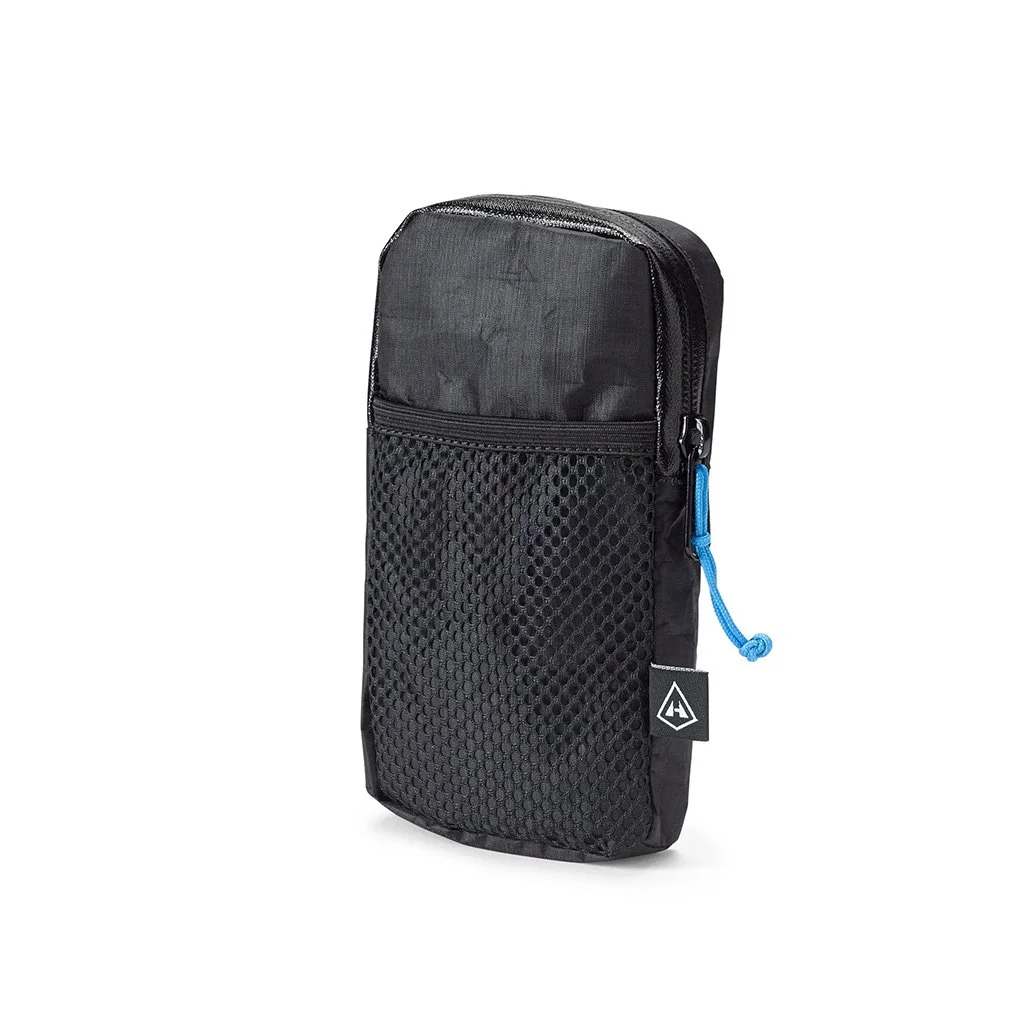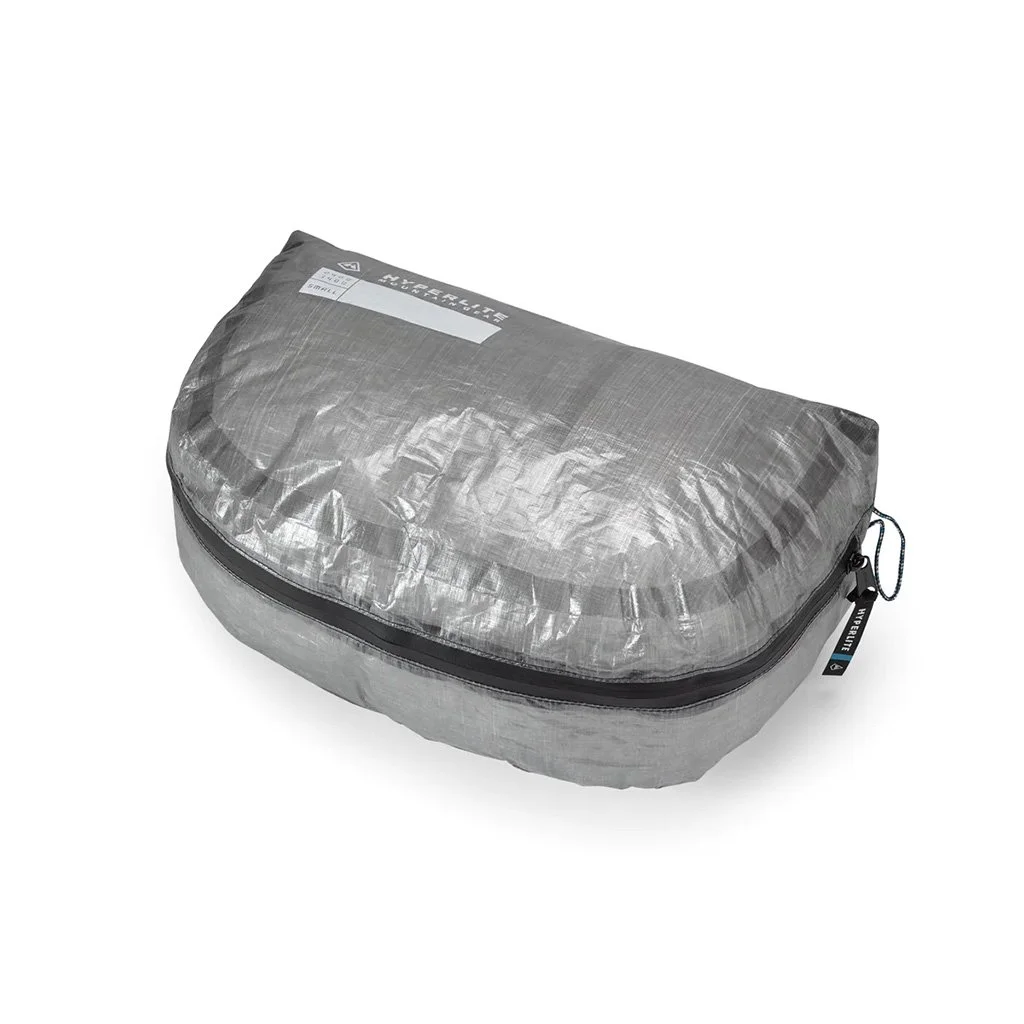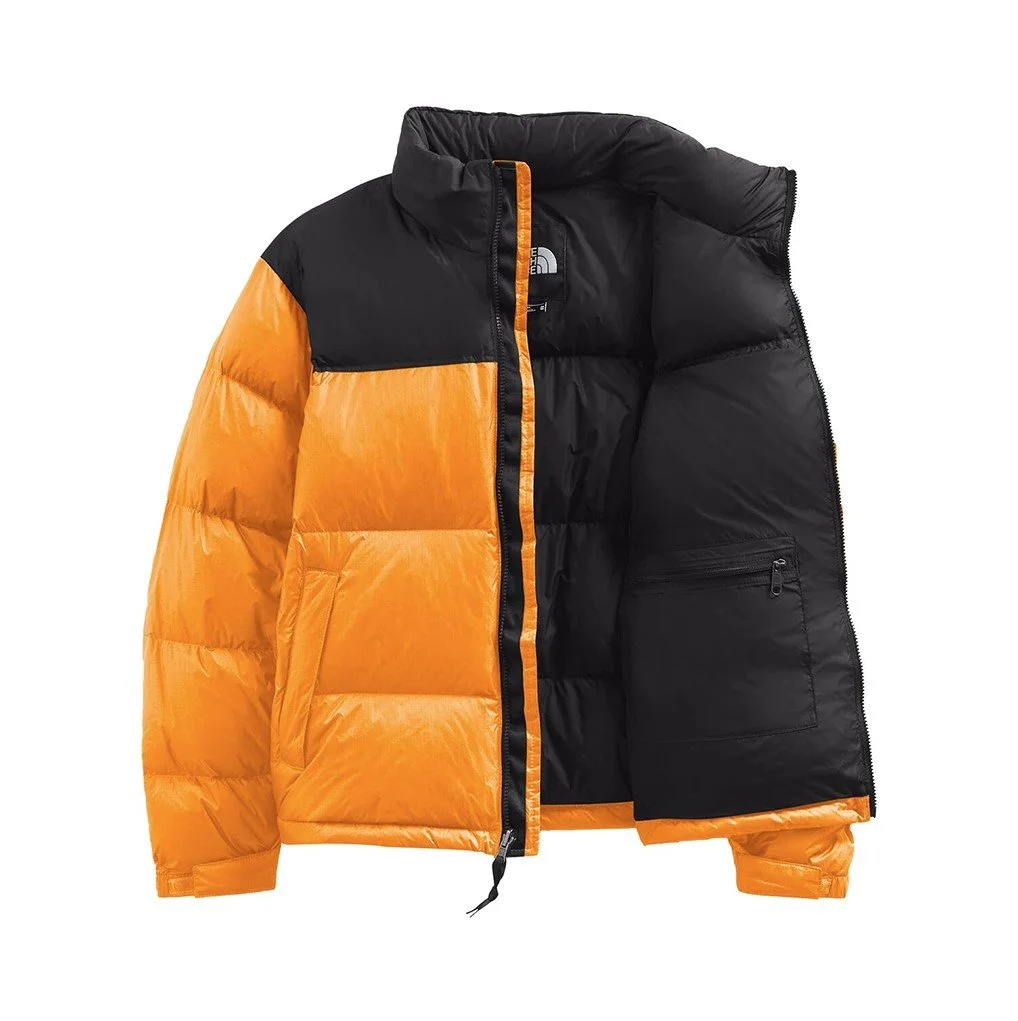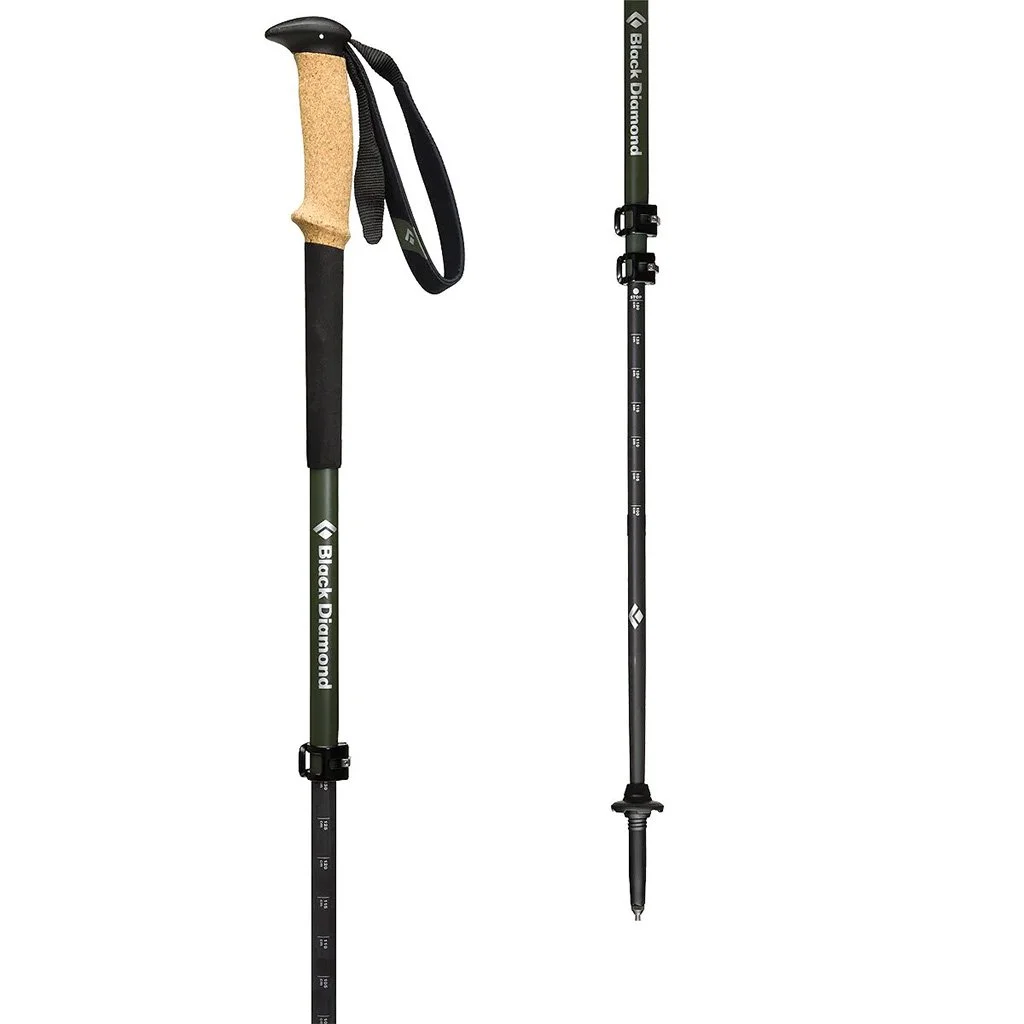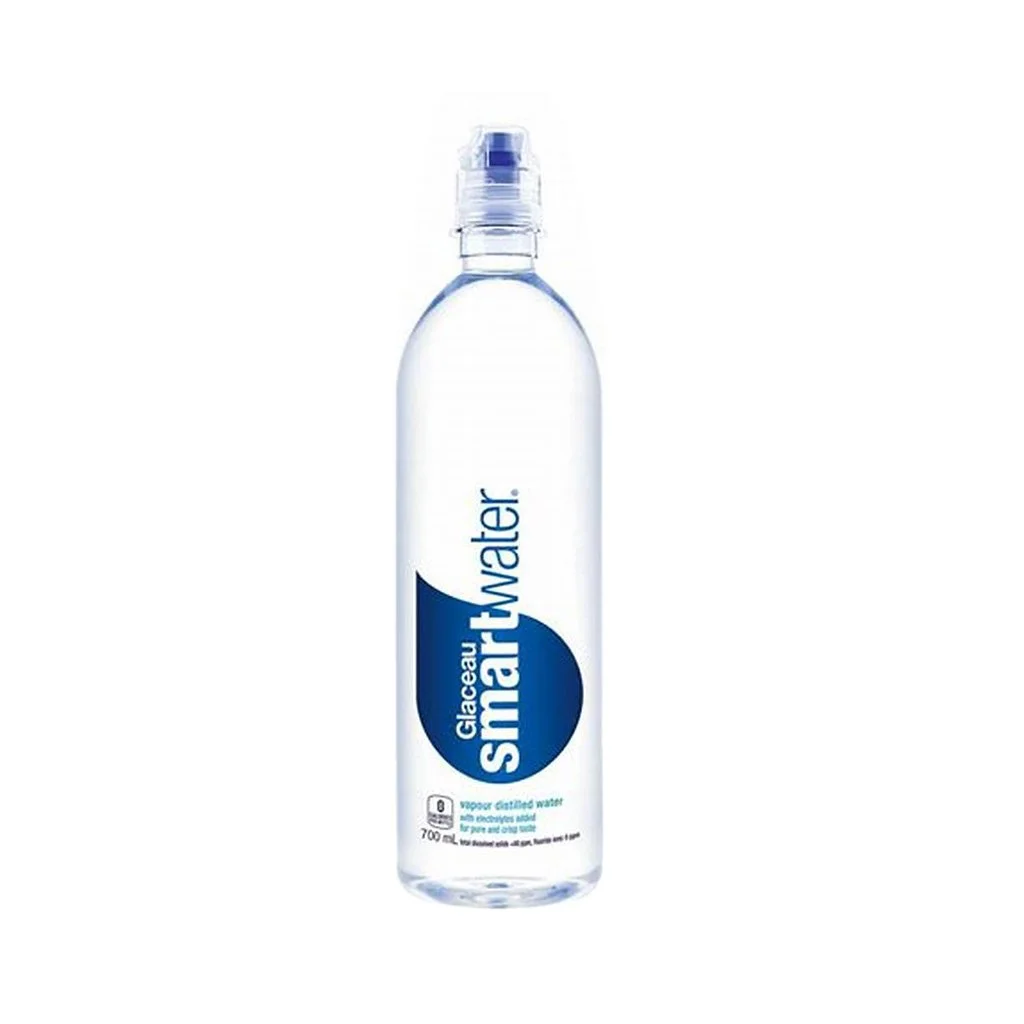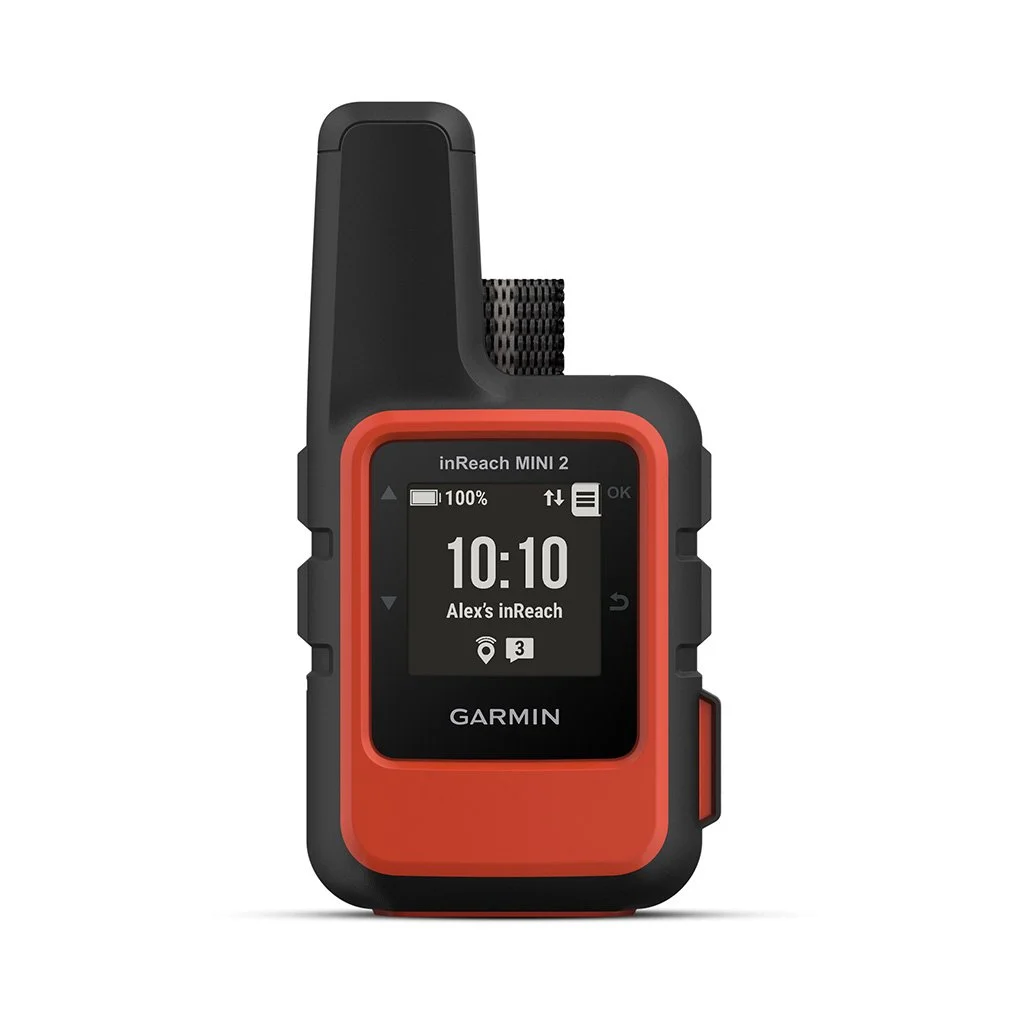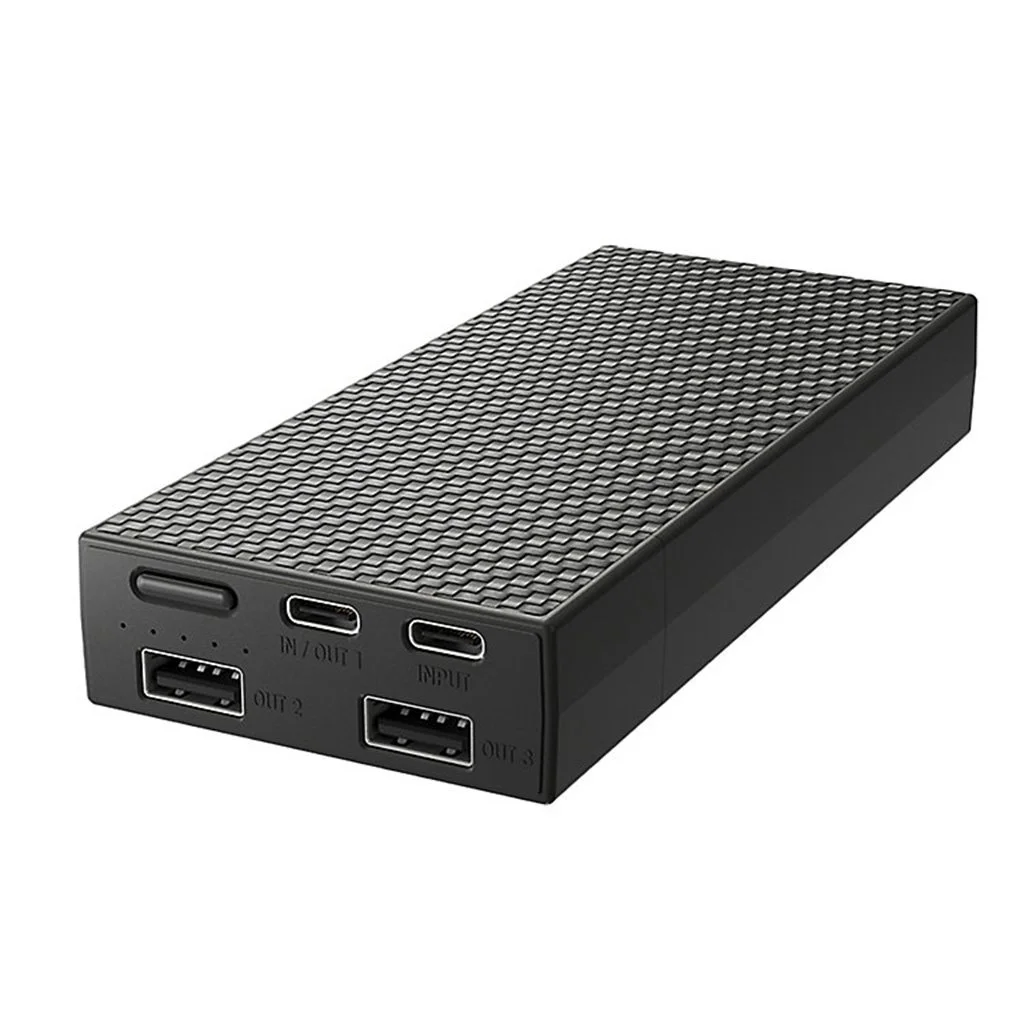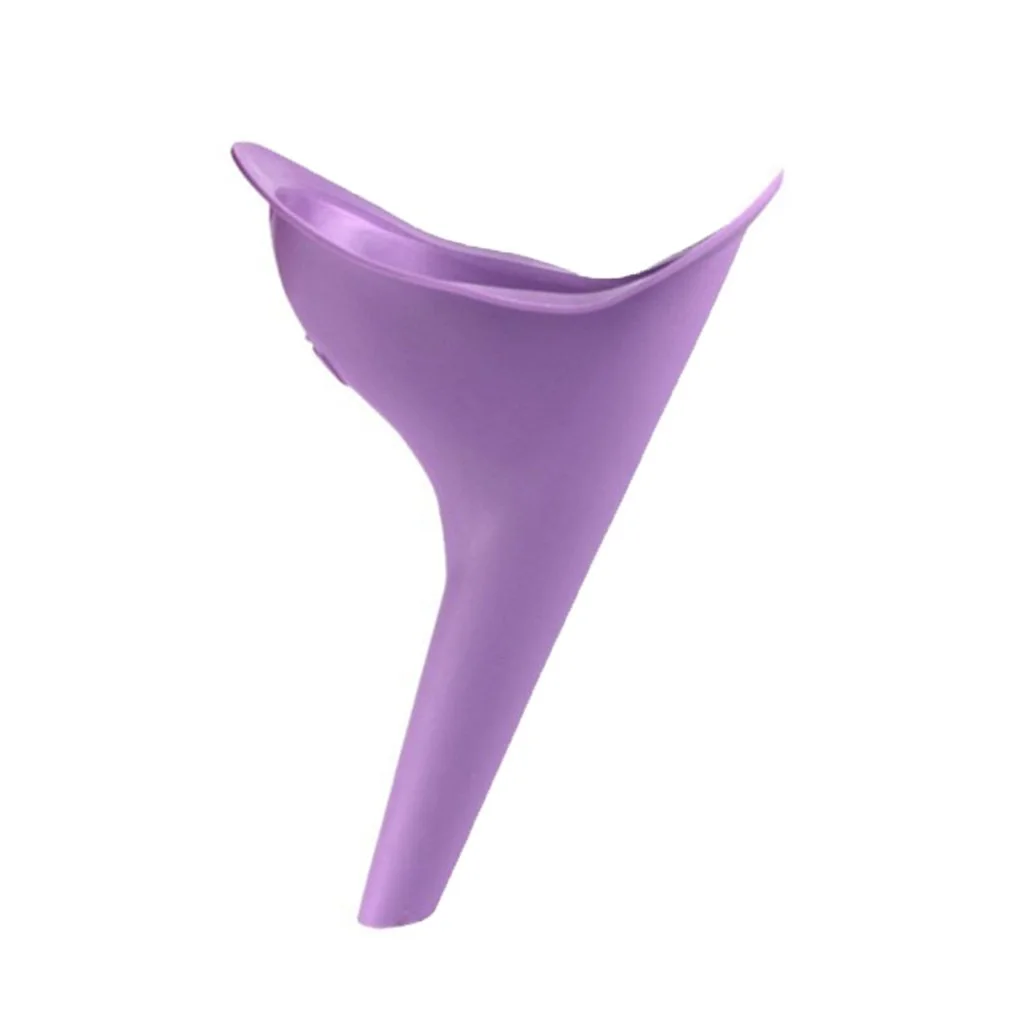
Gear List
Nepal // Teahouse Trek
Trekking in Nepal
Everest Base Camp, the Annapurna Circuit Trek, Manaslu Circuit Trek—these are some of the most famous and sought-after walks in the world; and for good reason.
The mountains in Nepal are big (obviously!) And any journey amongst them is unquestionably grand. Yet, trekking in these regions can be equally accessible thanks to a European-style, fully catered hut system of “tea houses.”
All of the huts have meal services; and you sleep in a bed every night. It makes for minimal equipment requirements and really light backpacks, enabling you to focus on the experience of being immersed in the mountains, without the headache of complicated gear and logistics.
Nepal possesses massive elevation profiles—from tropics near sea level; all the way to the highest point in the world. Oftentimes, the treks will start in low lands, which can be quite warm; and go up to passes higher than most points in North America—which can be quite cold. As such, these climate differences should be a consideration when choosing your kit.
Chris’s recommended kits for these types of missions are organized by category: Soft goods, Trekking Apparel, Footwear, Trekking Gear, Electronics, Personal Items, and Travel + Misc.
By purchasing through one of the links below, Chris will receive a small affiliate commission, which comes at no additional cost to the consumer.
Optional equipment is designated with an (*).
Softgoods
-
![]()
Backpack
30L - 40L is the ideal size. Opt for features like expansive side pockets, hip belt pockets, and minimalist design to streamline use.
This can also be used as a carry-on during both international and domestic air travel.
Consider these models:
—MHW Scrambler 35L
—Hyperlite Mountain Gear Unbound 40
—Ultimate Direction Fastpack 40
—Osprey Exos 38L M / Eja 38L W -
![]()
Shoulder Pocket
A universal shoulder pocket attaches to backpack straps to provide quick access to phones, passports, notepads, and more.
Check these ones out:
-
![]()
Fanny Pack
Excellent piece of kit for adding quick-access storage while hiking and traveling—think phone, passport, wallet, hand sani, sunglasses, dignity… Are we missing anything?
Consider these models:
—Cotopaxi Kapai 3L
—Cotopaxi Coso 2L
—Hyperlite Mountain Gear Versa -
![]()
Sleeping Bag
A sleeping bag will be used at huts, and any camps that your itinerary requires. Opt for a high-loft down (800-fill +) model for its great warmth-to-weight ratio and compressibility.
20°F - 0°F is an ideal temperature range. Opt for closer to 0°F if you tend to run cold.
Make sure to pack a compression stuff sack.
Consider these models:
—REI Co-op Magma 15°F W (Light)
—REI Co-op Magma 15°F M (Light)
—Sea to Summit Flame UL 15°F W (Lightest)
—Sea to Summit Spark UL 18°F (Lightest)—MHW Bishop Pass 0°F W (Warmer, Heavier)
—MHW Bishop Pass 0°F M (Warmer, Heavier) -
![]()
Camera Pod
If you’re planning on bringing a camera, consider a lightweight camera pod to provide protection from the elements and physical damage. These are great options:
-
![]()
Packing Pods
Use packing pods to organize clothes, accessories, and any other loose items that would be bettere collected together and stored inside your backpack.
-
![]()
Duffel (Large)
This should be a large, super durable duffel bag with burly zippers. First, it will be used to transport all of your gear during international travel. Then, it will be loaded up with your overnight kit, taken into the field, and shuffled from camp to camp by porters throughout your trek.
This is the best expedition duffel out there:
—Mountain Hardwear Expedition Duffel 100L
—Mountain Hardwear Expedition Duffel 140L -
![]()
Duffle (Medium)
A medium sized duffel (70-100L) can also be used as a checked bag during international travel, and will also be used to store personal items in Kathmandu while on expedition.
Consider these models:
—MHW Expedition Duffel 75L
—Patagonia Black Hole Duffel 70L
Trekking Apparel
-
![]()
Sun Hat
The easiest way to keep the sun off of your face is with a wide-brimmed hat. Look for one that has a drawstring for the neck in case it gets windy. If you don’t wanna look like Indiana Jones (or a dork, depending on the model) a trucker works too.
Consider these models:
—Tilley LTM6 Airflo
—Your favorite trucker or 5-panel -
![]()
-
![]()
Buff
A Buff is a super versatile neck gaiter that can keep your face warm, and help regulate the temperature of the air that you breathe by allowing it a chance to warm before going into your lungs. These are lightweight, durable, and an absolute necessity.
-
![]()
Down Parka
Extremely warm, light down parka for use around huts, while taking breaks during the high-altitude trekking sections, and on the pass.
Make sure that it fits over all of your other layers and goes past the waist. This should be a high-loft piece that feels like wearing a sleeping bag.
Consider these models:
—TNF 1996 Nuptse Men’s / Women’s
—Rab Positron Pro Men’s / Women’s
—MHW Phantom Men’s / Women’s -
![]()
Lightweight Insulated Hoody
This is a lightweight insulated layer, perhaps breathable, that can be worn for extra warmth while doing aerobic activity during very cold alpine starts on summit day.
Consider these models:
—The North Face 50/50 Men’s
—Patagonia Nano-Air Men’s / Women’s
—Backcountry Wolverine Men’s / Women’s -
![Alpine-style shell jacket]()
Shell Jacket
This is a weatherproof layer, with an alpine fit. Priorities should be low weight, breathability, and a helmet compatible hood.
It’s unlikely that heavy, wet precipitation will occur while climbing and trekking during Nepal’s high season, so this layer can be rather minimal. GoreTex Pro is likely overkill (and very heavy. ) A lightweight, waterproof-breathable softshell is the perfect option.
Consider these models:
—Rab Kinetic Alpine Men’s / Women’s
—TNF FUTURELIGHT Men’s / Women’s
—MHW Exposure 2 Men’s / Women’s -
![]()
Windbreaker
A windbreaker is incredibly versatile and lightweight; often provides just enough weather protection to take the bite off.
This will probably be the most-used piece of outerwear on the entire trip.
Consider these models:
—Cotopaxi Teca Half-zip
—Patagonia Houdini Men’s / Women’s -
![A lightweight hooded fleece jacket]()
Lightweight Mid-Layer
Lightweight, extremely breathable active insulated mid-layer for all-day wear, in-between your base layer and shell jacket.
The more breathable, the better. Like a fleece or a minimalist synthetic vest.
Consider these models:
—TNF FutureFleece Men’s / Women’s
—Rab Alpha Flash Men’s / Women’s -
![]()
Sun Hoody
A sun shirt functions to keep sun and UV off the skin in warm weather. Should be loose-fitting and have a hood. Sun shirts are typically synthetic, lightweight, and breathable.
Consider these models:
—Rab Force Hoody Men’s / Women’s
—Backcountry Tahoe 2 Men’s / Women’s
—Smartwool Merino Sport 150
—Give’r Solstice Hoody -
![Slim fitting base layer top]()
Base Layer, Top
Lightweight, breathable base layers. The purpose of these is to wick moisture away from the body, and begin to move it through the apparel system in order to effectively regulate temperature.
Synthetics breathe and wick better than Merino wool, but need to be washed more frequently.
Consider these models:
—TNF DotKnit Crew
—Patagonia Capilene Air Men’s / Women’s -
![]()
T-Shirt
A lightweight, breathable t-shirt will be perfect for hotter days in the shade or to wear while handwashing other clothes. A merino option will stink less than synthetic, but synthetic is more effective at moving moisture.
—Patagonia Capilene Cool Men’s / Women’s
—Icebreaker Tech Lite II Men’s / Women’s -
![Snug fitting baselayer pants]()
Base Layer, Bottoms
Lightweight, breathable base layers. The purpose of these is to wick moisture away from the body, and begin to move it through the apparel system in order to effectively regulate temperature.
Synthetics breathe better than Merino wool, but need to be washed more frequently.
Consider these models:
—TNF DotKnit Crew
—Patagonia Capilene Air Men’s / Women’s -
![]()
Hiking Pants
These hiking pants can be lighter duty, more comfortable soft shells compared to the climbing pants.
Look for a pair with good stretch, wind resistance, and comfortable everyday features like hand and thigh pockets.
Consider these models:
—Outdoor Research Ferrosi Men’s / Women’s
—MHW Chockstone Men’s / Women’s
—Fjallraven Abisko Trekking Tights Men’s / Women’s -
![Dark-colored rain paints]()
Hard shell (rain) pants
Here’s the deal: a lot of companies will try to sell you on super expensive, extremely waterproof GoreTex “technical shell” pants for mountaineering, alpinism, and ice climbing. Unless you’re climbing in a notoriously wet range like the North Cascades, you probably don’t need them.
Soft shell pants are way more durable, breathable, comfortable, and less expensive.
But, it can be good to have a pair of rain pants, just in case. Buy the cheapest, lightest pair that you can find. Just make sure that they have full-zip sides, so they’re easy to put on and take off.
Consider these models:
—Marmot PreCip Eco Full Zip Men’s / Women’s -
![]()
Shorts
A pair of lightweight running shorts are great to have for trekking at lower elevations where it can be quite a bit warmer; and for wearing around the huts, swimming in streams and hot springs, or while washing laundry.
Consider these models:
—Patagonia Endless Run Men’s / Women’s
—TNF Sunriser Men’s / Women’s -
![]()
Underwear
Bring two to four (2-3) pairs, depending on how frequently you want to hand wash.
No cotton! Merino or synthetic are fine. Pairs with antimicrobial treatments are great.
Consider these models:
—Icebreaker Anatomica Men’s / Women’s
—ExOfficio Give-N-Go Men’s / Women’s -
![]()
Socks
Bring 2-3 pairs pairs. Handwash when one pair feels too stiff to wear.
No cotton! Merino, synthetic, or blended is fine. Bring whatever combination that you’ve been training in and using with the footwear for this trip.
Consider these options:
—Darn Tough Light Hiker Men’s / Women’s
—FITS Light Hiker Crew -
![]()
Sleep Socks
Thick, cozy socks, just for sleeping or wearing around the hut with a pair of slides.
-
![Fleece liner gloves with touch screen compatible fingertips]()
Liner Gloves
These are thin, lightweight, dexterous glove liners to be worn when it’s slightly chilly.
Make sure that they are touchscreen compatible.
Consider these models:
—https://app.rockpor.ch/prd/pol8M75FZE?r=1Outdoor Research Merino 150 Sensor
—Icebreaker 200 Oasis Liner -
![Dexterous leather gloves with colorful fabric backs]()
Active Gloves
These are dexterous gloves with durable palms for use with trekking poles, cooking systems, or other equipment—and to take the weather’s edge off. Possibly lined, but not insulated. WindStopper on the backs.
Don’t bother with anything else other than the absolute best outdoor glove that exists.
-
![Leather insulated mittens with red cuffs]()
Insulated Mittens
These will be the main glove used on particularly cold passes and peaks. It should balance warmth, dexterity, and durability.
They should be dexterous enough to allow for the handling of personal items (snacks, bottles, etc.)
Consider these models:
—Give’r Frontier Mitt
—Black Diamond Soloist 3-finger Mitt
Footwear
-
![]()
Hiking Shoes
Use whatever footwear you typically / are comfortable hiking or backpacking in.
95% of the hiking portion of the trip will take place on well-groomed trails while carrying light packs—so big, heavy hiking boots aren’t really needed.
It can be quite warm at lower elevations and quite cold at higher ones, so Chris opts for densely-woven trail running or approach shoes, potentially with GTX (on this rare occasion,) simply to keep dust out.
Consider these models:
—Salewa Dropline Mid
—Altra Lone Peak All-Weather Mid 2
—Salomon Cross Hike Mid GTX -
![]()
Camp Slides*
A pair of lightweight slides are great to have on these particular expeditions. You can wear them with socks (for extra insulation) inside the huts; you’ll definitely want a pair when the occasional opportunity to shower presents itself.
Consider these models:
—Crocs Mellow Slides
—Crocs Classic Clog -
![]()
Sandals*
Hiking sandals make a great, more robust alternative to camp slides. Bedrock Sandals have a minimalist fit and athletic performance. Pair ‘em with Injinji split toe socks for warmth around the huts.
-
![]()
Down Booties*
*Optional, but damn nice to have.
Use ‘em for walking around huts at night and morning. A bootie with a bit of a sole will provide durability for late-night pee breaks.
Consider these models:
—Outdoor Research Tundra
—TNF ThermoBall Eco Traction Bootie
Trekking Gear
-
![]()
Headlamp
A bright (600+ lumens) USB rechargeable headlamp is ideal. IPX weatherproofing is a bonus.
Consider these models:
—BioLite HeadLamp 425
—LEDLENSER NEO9R -
![]()
Glacier Glasses
This could, perhaps be the most critical item on this list. Adequate eye protection is an absolute must while moving through the mountains, particularly at high altitudes.
Glacier glasses with removable side shields are ideal, however, full-wrap sport performance sunglasses could work, too. Whatever you wear, ensure that the lenses are dark enough to contend with the high glare experienced on snow.
Consider these models:
—Revo Traverse
—Julbo Cham -
![]()
Trekking Poles
Trekking poles add stability and power when traveling up and down hill.
Look for a pair that collapses in length, with three sections for compactness.
Carbon poles are the lightest and most durable, but are more expensive than aluminum.
Consider these models:
—Black Diamond Alpine Carbon Cork
—Black Diamond Pursuit Poles
—Stoic Powerlock Poles -
![]()
Microspikes
Micro spikes provide traction on icy or hard-packed snow surfaces. Fit is semi-universal. We’ll use these while trekking over alpine passes.
-
![]()
Crampons*
Crampons provide greater traction than micro spikes in snow. An aluminum model with a universal attachment system will be similar in weight to micro spikes.
-
![]()
Pocketknife
A small pocketknife is useful for cutting moleskin, tape, and packaging.
Consider these models:
—Opinel No.8 Outdoor
—Leatherman Skeletool -
![]()
Water Filter
There’s no potable water available while trekking; many huts and shops sell plastic bottled water. Don’t buy those. They end up on the side of the trail and in landfills and oceans—and they’re expensive.
Carry a personal water filter instead and use it to filter at huts and from streams.
Consider these models:
—Katadyn Be Free Tactical
—LifeStraw Peak Squeeze -
![]()
Nalgene, 1.5L
A 1.5L “soft” bottle is ideal for cold weather expeditions. The soft bottles conform better to the body when used as a “hot water bottle” inside a sleeping bag for extra warmth; the larger 1.5L size maintains its heat more efficiently than a 1L.
Consider these models:
—Nalgene HDPE 1.5L
—40 Below Cold Weather Water Bottle 1.5L -
![]()
Electronics
-
![]()
Watch
A watch isn’t totally necessary for a guided program, but they are incredibly useful, particularly if using one with GPS and altimeter features.
Follow along with altitude gain during the acclimatization program, keep track of daily distances, sunrise/sunset, and more.
Consider these models:
—Garmin Fenix 7 Sapphire Solar
—Garmin Instinct 2 Solar -
![]()
Camera
Modern mobile phones take pretty damn great pictures these days… But it is the trip of a lifetime?
Action cameras are great for going hands-free while hiking and for selfies. Mirrorless cameras capture incredible images from a pretty compact package. Film cameras never go out of style. 360 cameras are out of this world. You get the picture.
Consider these options:
—GoPro Hero11
—GoPro Hero MAX (360) -
![]()
Satellite Communicator*
A 2-way satellite communicator can allow for text messaging from remote areas; actively record GPS tracks; and provide location services in the event of an emergency.
-
![]()
eReader
There will inevitably be a lot of down time during the trek, particularly in the evenings. If you like to read, it’s worth bringing an eReader loaded up with books that you’ve been wanting to dive into.
eReader batteries last a lot longer than phone batteries; and their screens are much easier on the eyes.
Some of the huts have paperback collections that you can trade titles from, but those could be a hit or miss.
-
![]()
Earbuds
Self-explanatory. But an active-proof pair, resistant to sweat and elements is great.
-
![]()
Powerbank
Bring a power bank or two for charging electronics. Huts in popular tourist trekking areas of Nepal have solar infrastructure and charge a fixed rate to charge a single device, regardless of its capacity.
It’s a lot cheaper and more efficient to charge a powerbank once every few days than it is to charge a phone every day.
Don’t forget to pack:
—Cables
—Charging Block
Personal Items
-
![]()
Sunscreen
Also very important. A mineral sunscreen that uses zinc oxide will provide a physical block, which is more predictable than chemical blocks used in many lotions. A stick will keep the mess off your hands, too.
Consider these models:
—Badger Balm Zinc Oxide Sport Stick
—Salt & Stone Tinted Sunscreen Stick -
![]()
First Aid Kit
Our guides carry comprehensive medical kits, so keep yours light and compact. Here are some things to consider packing:
—Band-Aids
—Antibiotic ointment
—Moleskin and blister care
—Medical tape and/or duct tape
—Cough drops
—Basic painkillers
—Antacid
—Anti-diarrheal
—Personal medications -
![]()
Pee Cloth
Re-usable, anti-microbial pee cloth. Less waste than TP, and easier to carry, too.
-
![]()
Pee Funnel
For the ladies.
-
![]()
Travel Towel
Lightweight, quick-drying, microfiber is the best bet. Go full size for convenience, or washcloth sized if you’re a masochist.
-
![]()
Toiletry Case
A quart-sized Ziploc freezer bag will work, or get fancy with a dedicated toiletry case. Chris loves this one:
Travel & Misc.
-
Passport
Ensure that the expiration date is at least six months after your scheduled return. Have a digital copy on your phone, and saved in the cloud, as well.
-
Passport Photos
Come prepared with two additional physical passport photos.
-
Flight Itinerary
Keep a printed copy of your flight itinerary.
-
Travel Clothes
Have a fresh set for arrival, and another for departure.
-
Medications
Consult with your physician about which medications it make sense for you to bring while on a remote international trip and for high altitude climbing.
Many of these can be acquired OTC in Thamel. At minimum, bring the following:
ANTIBIOTICS
Broad spectrum antibiotics like Ciprofloxacin (500mg tablets), Metronidazole, and Azithromycin (250mg tablets).ACETAZOLAMIDE (DIAMOX)
125mg tablets for prevention or treatment of Acute Mountain Sickness.DEXAMETHAZONE
4mg tablets for treatment of altitude illness. -
MISC.
—Snacks (GU, Shot Blocks, etc. for summit day)
—Toiletries (Hand sanitizer, Toothpaste/TB, etc.)
—Lip Balm (SPF 15+)
—Ear plugs
—Journal / Pen
—Stuff sacks
—Spare contacts / eyeglasses
—(4) Chemical Handwarmers (Pairs)
—(2) Chemical Footwarmers (Pairs)
—Small soap + shampoo/conditioner


